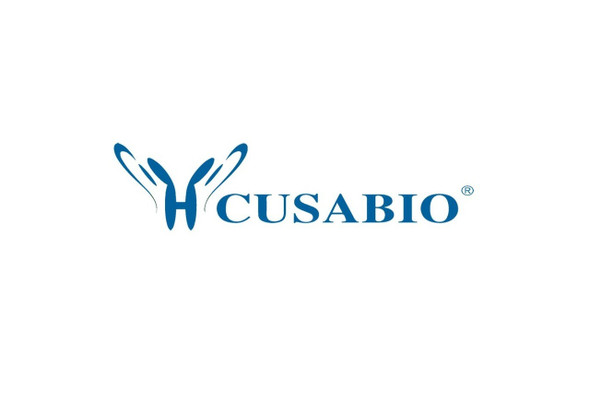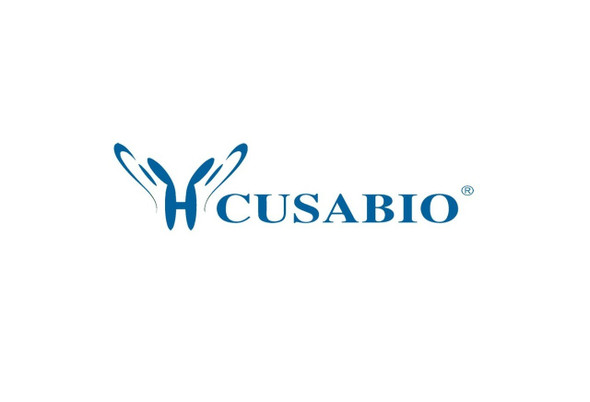Cusabio Human Recombinants
Recombinant Human Nicotinamide mononucleotide adenylyltransferase 1 (NMNAT1) | CSB-EP864012HU
- SKU:
- CSB-EP864012HU
- Availability:
- 13 - 23 Working Days
Description
Recombinant Human Nicotinamide mononucleotide adenylyltransferase 1 (NMNAT1) | CSB-EP864012HU | Cusabio
Alternative Name(s): Nicotinamide-nucleotide adenylyltransferase 1
Gene Names: NMNAT1
Research Areas: Epigenetics and Nuclear Signaling
Organism: Homo sapiens (Human)
AA Sequence: MENSEKTEVVLLACGSFNPITNMHLRLFELAKDYMNGTGRYTVVKGIISPVGDAYKKKGLIPAYHRVIMAELATKNSKWVEVDTWESLQKEWKETLKVLRHHQEKLEASDCDHQQNSPTLERPGRKRKWTETQDSSQKKSLEPKTKAVPKVKLLCGADLLESFAVPNLWKSEDITQIVANYGLICVTRAGNDAQKFIYESDVLWKHRSNIHVVNEWIANDISSTKIRRALRRGQSIRYLVPDLVQEYIEKHNLYSSESEDRNAGVILAPLQRNTAEAKT
Source: E.coli
Tag Info: N-terminal GST-tagged
Expression Region: 1-279aa
Sequence Info: Full Length
MW: 58.9 kDa
Purity: Greater than 90% as determined by SDS-PAGE.
Relevance: Catalyzes the formation of NAD+ from nicotinamide mononucleotide (NMN) and ATP. Can also use the deamidated form; nicotinic acid mononucleotide (NaMN) as substrate with the same efficiency. Can use triazofurin monophosphate (TrMP) as substrate. Also catalyzes the reverse reaction, i.e. the pyrophosphorolytic cleavage of NAD+. For the pyrophosphorolytic activity, prefers NAD+ and NaAD as substrates and degrades NADH, nicotinic acid adenine dinucleotide phosphate (NHD) and nicotinamide guanine dinucleotide (NGD) less effectively. Involved in the synthesis of ATP in the nucleus, together with PARP1, PARG and NUDT5. Nuclear ATP generation is required for extensive chromatin remodeling events that are energy-consuming. Fails to cleave phosphorylated dinucleotides NADP+, NADPH and NaADP+. Protects against axonal degeneration following mechanical or toxic insults
Reference: "Characterization of recombinant human nicotinamide mononucleotide adenylyl transferase (NMNAT), a nuclear enzyme essential for NAD synthesis." Schweiger M., Hennig K., Lerner F., Niere M., Hirsch-Kauffmann M., Specht T., Weise C., Oei S.L., Ziegler M. FEBS Lett. 492:95-100(2001)
Storage: The shelf life is related to many factors, storage state, buffer ingredients, storage temperature and the stability of the protein itself. Generally, the shelf life of liquid form is 6 months at -20?/-80?. The shelf life of lyophilized form is 12 months at -20?/-80?.
Notes: Repeated freezing and thawing is not recommended. Store working aliquots at 4? for up to one week.
Function: Catalyzes the formation of NAD(+) from nicotinamide mononucleotide (NMN) and ATP
Involvement in disease: Leber congenital amaurosis 9 (LCA9)
Subcellular Location: Nucleus
Protein Families: Eukaryotic NMN adenylyltransferase family
Tissue Specificity: Widely expressed with highest levels in skeletal muscle, heart and kidney. Also expressed in the liver pancreas and placenta. Widely expressed throughout the brain.
Paythway:
Form: Liquid or Lyophilized powder
Buffer: If the delivery form is liquid, the default storage buffer is Tris/PBS-based buffer, 5%-50% glycerol. If the delivery form is lyophilized powder, the buffer before lyophilization is Tris/PBS-based buffer, 6% Trehalose, pH 8.0.
Reconstitution: We recommend that this vial be briefly centrifuged prior to opening to bring the contents to the bottom. Please reconstitute protein in deionized sterile water to a concentration of 0.1-1.0 mg/mL.We recommend to add 5-50% of glycerol (final concentration) and aliquot for long-term storage at -20?/-80?. Our default final concentration of glycerol is 50%. Customers could use it as reference.
Uniprot ID: Q9HAN9
HGNC Database Link: HGNC
UniGene Database Link: UniGene
KEGG Database Link: KEGG
STRING Database Link: STRING
OMIM Database Link: OMIM










